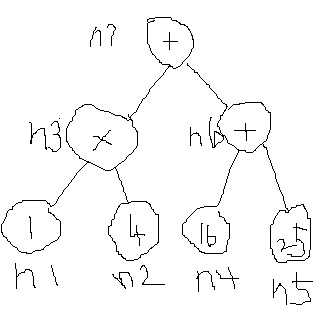히트 트리 테스트 프로그램
#include <stdio.h>
#define MAX_ELEMENT 200
typedef struct {
int key;
} element;
typedef struct {
element heap[MAX_ELEMENT];
int heap_size;
} HeapType;
init(HeapType *h) //초기화
{
h->heap_size = 0;
}
void insert_max_heap(HeapType *h, element item) //삽입
{
int i;
i = ++(h->heap_size);
while((i != 1) && (item.key >h->heap[i/2].key)) {
h->heap[i] = h->heap[i/2];
i/=2;
}
h->heap[i] = item;
}
element delete_max_heap(HeapType *h) //삭제
{
int parent, child;
element item, temp;
item = h->heap[1];
temp = h->heap[(h->heap_size)--];
parent = 1;
child = 2;
while(child <= h->heap_size) {
if((child < h->heap_size) && (h->heap[child].key) < h->heap[child+1].key) child++;
if(temp.key >= h->heap[child].key) break;
h->heap[parent] = h->heap[child];
parent = child;
child *= 2;
}
h->heap[parent] = temp;
return item;
}
void main(void)
{
element e1 = {10}, e2 = {5}, e3 = {30};
element e4, e5, e6;
HeapType heap;
init(&heap);
insert_max_heap(&heap, e1);
insert_max_heap(&heap, e2);
insert_max_heap(&heap, e3);
e4 = delete_max_heap(&heap);
printf("<%d> ", e4.key);
e5 = delete_max_heap(&heap);
printf("<%d> ", e5.key);
e6 = delete_max_heap(&heap);
printf("<%d>\n", e6.key);
}




